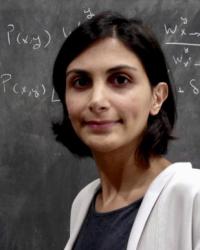Learning the shape of the immune and protein universe
Armita Nourmohammad, Associate professor of Physics and Adjunct professor of Applied Math, at University of Washington

The adaptive immune system consists of highly diverse B- and T-cell receptors, which can recognize a multitude of diverse pathogens. Immune recognition relies on molecular interactions between immune receptors and pathogens, which in turn is determined by the complementarity of their 3D structures and amino acid compositions, i.e., their shapes. Immune shape space has been previously introduced as an abstraction of molecular recognition in the immune system. However, the relationships between immune receptor sequence, protein structure, and specificity are very difficult to quantify in practice. In this talk, I will introduce physically motivated machine learning approaches to learn representations of protein micro-environments in general, and of immune receptors, in particular. Despite no direct training on immune-antigen data, the implicit physical reasoning in our model enables us to make accurate predictions for antigen-induced T-cell activities across diverse viral epitopes and cancer neo-antigens, and to design novel immunogenic peptides that can elicit T-cell responses.We use our generative framework to quantify the diversity of the T-cell recognition landscape, offering key insights into T-cell specificity in both humans and mice. Our approach provides a platform for immunogenic antigen design, opening new computational paths for T-cell vaccine development against viruses and cancer.
